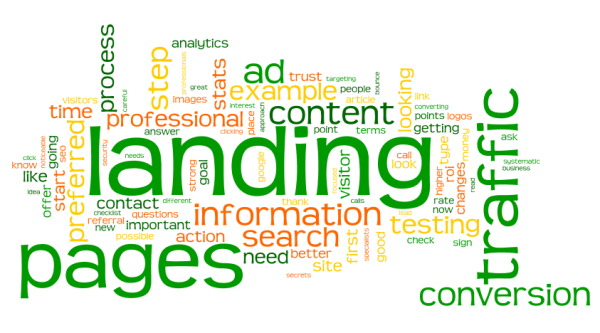
- Use Autofill
One way to improve the conversion rate of a landing page is to use autofill data from social media on form fields. Autofill works by having a button on the landing page that allows people to use their social media login to provide the relevant field data like name, address, etc. This way when a person gets to a page, all they need to do is login to their social media account (if they aren't already), confirm the information in the fields and move on to the next step of checkout. Filling in the data for the user has a dramatic effect on conversion rates. According to a recent report from FormCentral, form conversion rates increase by as much as 189 percent when social media autofill features are used. - Keep it Brief
Even when using autofill to speed up the process, it's important to keep the conversion process on the landing page brief. Forms for lead generation, website registrations, or products should only have the fields for the most important information. It's understandable that marketers want to get all the information they can so they can make a better pitch to future customers, a long form is very discouraging to consumers. If a customer gets to the landing page and sees 40 boxes that need to be filled in or checked, they may decide to skip the whole thing. The fewer fields the better, but for a benchmark to consider, the FormCentral report mentioned that the average form on a landing page has 22 fields. Similarly, any video content needs to be brief, no longer than five minutes. Even if a longer, more in-depth video exists, it's unlikely most consumers would watch the whole thing before getting bored and losing the interest that initially brought them to the site. - Include Testimonials and Reviews
A landing page has the difficult job of converting the attention a consumer gave an ad into a positive interaction all within a few minutes. One way to do this is to capitalize on the trust people place in reviews from other consumers. Including testimonials or product reviews accomplishes two goals. First, it lets the consumer know that other people bought items from this retailer and were satisfied enough to leave feedback. Second, it reassures them about the usefulness of the product or service being advertised. It may seem like a little thing, but a testimonial or review turns the product from something that is theoretically useful into something that has proven useful to someone already. - Use Trust Indicators
Another way to build confidence with customers on a landing page is to use what FormCentral calls "trust indicators". These are things like logos from the Better Business Bureau, Verisign, Angie's Lists awards, etc. that show that a business has a good reputation. As useful as testimonials and reviews are, customers know to view them with a grain of salt. Having trust indicators show that a retailer is legitimate from unbiased reports. To illustrate the potential,when one company began using VeriSign, they saw a 41% increase in conversions and a 58% increase in revenue per transaction. Trust indicators are worth the cost and effort to get them because 3rd party recommendations mean a lot to consumers who are looking for reasons to trust a retailer that's new to them. - Mobile Optimized Forms
A landing page should be designed to function well on mobile devices as well as desktop browsers. According to recent data from comScore, nearly a third of website traffic comes from mobile devices, so it's necessary to make forms mobile optimized. If it's difficult to use the landing page on a tablet or smartphone, consumers may pass up an opportunity out of frustration. A mobile-optimized form has fields that are large enough that they can be read on mobile screens with buttons spaced far enough apart to prevent accidental clicks. Some form plugins do this automatically; some websites will need to setup their landing page to detect the screen size and move mobile users to a specific page designed for mobile. - Link Customer Support
No matter how clear or well explained things are on the landing page, there will always be the potential for someone to have a question. Putting a link to support, preferably through live chat, ensures that a customer doesn't have to leave the sales funnel to search for assistance. If a customer has to leave the landing page to search the site for answers or to send a request on social media, there's a good chance they'll decide it's not worth the effort. Besides helping customers, a link to customer support shows the consumer a retailer is concerned about their experience and are there to help when needed. - Keep Most Important Elements Above the Fold
When designing a landing page, it's good to keep all the most important elements above the fold (the portion of the page that can be seen before scrolling down). Anything below the fold is at risk of not being seen which is why it's bad to have important buttons or calls-to-action below the fold. It also helps to use large headlines and eye-catching buttons in the design. That way, when a person first scans the page, they can quickly get the gist of what needs to be done and why.
A landing page is where conversions are made or lost, so business owners should play with the variables to see what works best with a target audience. The easier it is for consumers to complete the process on the landing page, the more people will stick to it through the end. Using these seven tips will help marketers create landing pages that convert more customers.
To view the original article Click Here

No comments:
Post a Comment